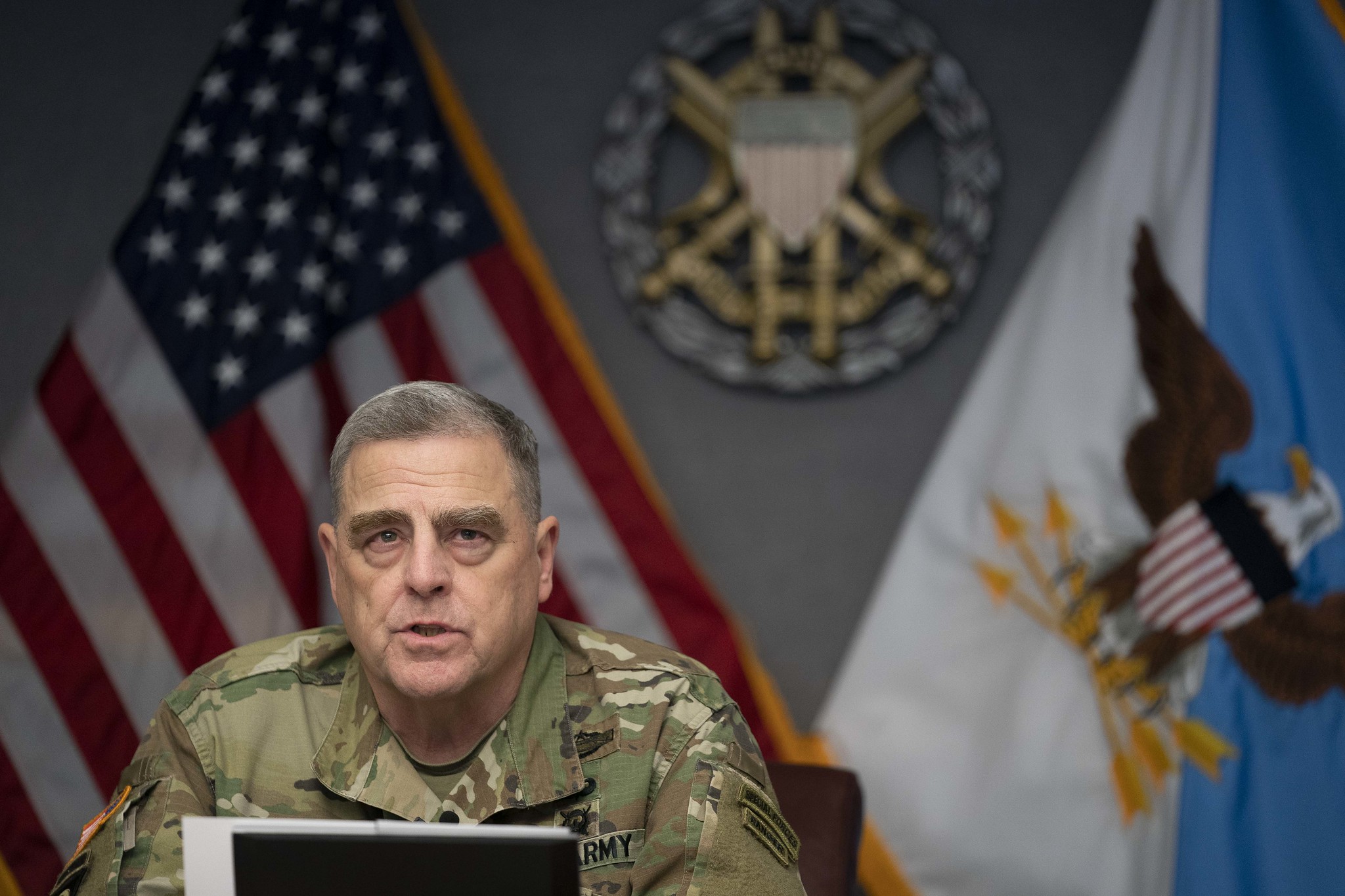
The world is in the midst of a fundamental change in the character of warfare as a variety of nations begin to field directed energy, hypersonics and autonomous systems, the chairman of the Joint Chiefs of Staff said on Thursday.
“I would argue that today [we] are in the middle of a fundamental change in the character of war,” Gen. Mark Milley said during the U.S. Naval Institute’s Defense Forum Washington conference on Thursday.
“The nature of war is probably not going to change, but the character of war does change and it changes frequently.”
Speaking at the Naval Institute and earlier this week at the Brookings Institution, Milley laid out how he sees the roles of the U.S. military services changing in light of the new technologies.
“It is conceivable, theoretically conceivable that in some point in the future you could have entire tank units without crews, or entire squadrons without pilots, ships or carrier strike groups without sailors. Not say it’s going to happen [but] it’s theoretically possible. So robotics is coming on and it’s going to have a military application in the not very distant future,” he said at Brookings.
Milley used the example of precision weapons, almost exclusively an American military advantage during the Cold War and certainly in the first Gulf War, as how quickly technology can change warfare and spread.
“Now they’re almost ubiquitous,” with nations like Iran using them to attack Saudi Arabian oil production facilities in 2019, he said.
In the near future, Milley said robotics, which are already widely used in the commercial sector;” “incredibly powerful” artificial intelligence; hypersonics; “and five or 10 [other] rapidly approaching technologies” will have a profound impact on the armed forces in organization, doctrine and training.
China is the key adversary the U.S. is crafting its next phase of security planning around.
“They are developing an exceptionally strong military that is going to be capable in space and cyber, on the sea, land and air,” Milley said at the Naval Institute.
“They have a very deliberate plan and a vision of the future. It’s very calibrated and they know the interim objectives that they’re trying to meet with their intent. Their intent is to essentially match the United States, military capability and capacity by call it the mid 2030-ish timeframe, 2035. And they would like to not only match but to exceed is to dominate us, to be able to beat us in armed conflict by the mid-century.”
The stakes are far higher now with nuclear weapons in the arsenals of a number of countries, including North Korea as well as the U.S., China and Russia.
The question remains “how do you deter [a potential adversary] from even thinking they could be successful” in a military strike against the United States. He answered his own question by emphasizing communicating “clearly and unambiguously” with other nations if A happens the United States will react.
Milley said that means the United States needs to remain strong economically, diplomatically and militarily to maintain credible deterrence. It also translates into maintaining strong alliances with like-minded nations in NATO and the Indo-Pacific region.
Looking at budget numbers in the immediate future, Milley said a “reality check” means there likely will be a flattening budget or Pentagon spending “could actually decline significantly.” The Defense Department’s budget is now at about $750 billion annually.
If the Pentagon needed to reorient its priorities with a lower topline, the current National Defense Strategy would lean toward naval power, Milley said.
“The fundamental defense of the United States, and the ability to project power forward is going to be naval and air and space power,” he said.
The nation’s priority is “taking care of the COVID pandemic and to breathe new life into the economy.”
“We have to take a hard look at what we do … everything we do” from overseas bases to deployments and exercises to control spending. He asked rhetorically, “is everyone of those necessary for the defense of the United States.” In an answer to a related question, Milley said the department is on course to reduce American forces in Afghanistan and Iraq to 2,500 service members in each country by Jan. 15. He described the 19-year campaign in Afghanistan as having achieved “a modicum of success.”
With the exception of pilots and cyber specialists, “recruiting has been pretty good.”
Milley said the armed services learned much about dealing with COVID-19 from what happened aboard carrier USS Theodore Roosevelt (CVN-71) and destroyer USS Kidd (DDG-100) that led to changes in training schedules and operations “to protect the force” against its spread.
“We’re unique [with] a hierarchical structure” that is able to “issue orders and people follow them.” He also said the military benefitted from having a young, physically fit work force in its ranks.
At the peak of the pandemic late last winter and early spring, Milley said more than 60,000 service members and the Navy’s hospital ships were employed to help or supplement civilian health care workers and facilities. He estimated 20,000 to 23,000 are continuing to provide this supplemental care in civilian communities today.
He added the department is “committed to Warp Speed” in the distribution of the COVID-19 vaccines, which the FDA is slated to review for emergency approval.





